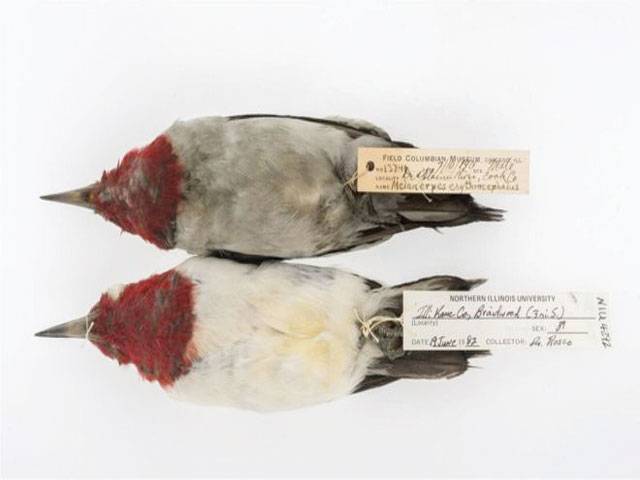LOS ANGELES-Soot trapped in the feathers of songbirds over the past 100 years is causing scientists to revise their records of air pollution.
US researchers measured the black carbon found on 1,300 larks, woodpeckers and sparrows over the past century.
They’ve produced the most complete picture to date of historic air quality over industrial parts of the US.
The study also boosts our understanding of historic climate change. Black carbon, a major component of soot, is created through the incomplete burning of fossil fuels such as coal.
The dirty air generated as a result became a major problem as industrialisation expanded across Europe and the US at the end of the 19th century.Cities were soon coated in sooty air thanks to the unregulated burning of coal in homes and factories. While the huge impact of black carbon on the health of people living in urban centres has been recognised for decades, it is only in recent years that scientists have understood the role it plays climate change.
When it is suspended in the air, the substance absorbs sunlight and increases warming in the atmosphere. When it hits the ground it increases melting of snow and ice, and has been linked to the loss of ice in the Arctic region. US researchers have struggled to find accurate records of the amount of black carbon that was emitted in the manufacturing belt of the US, around Chicago, Detroit and Pittsburgh at the end of the 19th century. This new study takes an unusual approach to working out the scale of soot coming from this part of the US over the last 100 years. The scientists trawled through natural history collections in museums in the region and measured evidence of black carbon, trapped in the feathers and wings of songbirds as they flew through the smoky air. The researchers were able to accurately estimate the amount of soot on each bird by photographing them and measuring the amount of light reflected off them.
“We went into natural history collections and saw that birds from 100 years ago that were soiled, they were covered in soot,” co-author Shane DuBay, from the Field Museum and the University of Chicago, told BBC News.
“We saw that birds from the present were cleaner and we knew that at some point through time the birds cleaned up - when we did our first pass of analysis using reflectance we were like wow, we have some incredible precision.”
Their analysis of over 1,000 birds shows that black carbon levels peaked in the first decade of the 1900s and that the air at the turn of the century was worse than previously thought.
The study showed that during the great depression in the US, the use of coal fell. It boomed again during World War Two but began a long term decline straight after as new fuels like gas were used to heat homes and less polluting forms of coal were burned.
While the study has improved the timeline of air pollution across the industrial part of the US, it also indicates that current emissions inventories underestimate atmospheric levels of black carbon in the early industrial age. “The big finding and implication of our study is that we are recovering relative concentrations of atmospheric black carbon that are higher than previously estimated from other methods,” said Shane DuBay.
“It helps constrain and inform how we understand the relative role of black carbon in past climate and by understanding that we can more accurately model future climate scenarios.”
Having refined this novel approach the authors believe that it can be adapted for use in other parts of the world with a strong industrial heritage.
“We are very excited about the prospects of expanding the project into the UK which has a longer history of industry and also a longer history of natural history collecting,” said co-author Carl Fuldner from the University of Chicago. “Some of the resources in the UK go back much farther in time, so the results we could find in a comparative study would be very exciting.”






